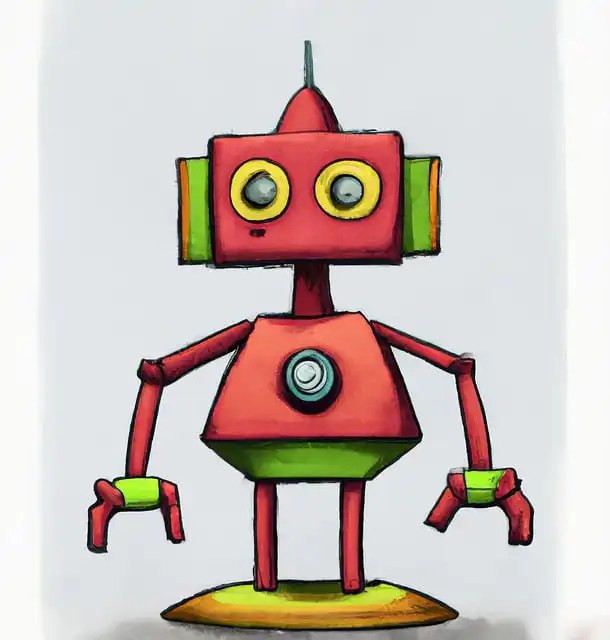Dual-Arm HyQReal Puts Powerful Telepresence Anywhere

“The development of core actuation technologies with high power, low weight, and advanced control has been a key enabler in our efforts,” says Nikos Tsagarakis, head of the HHCM Lab at IIT.
The system is designed to be made use of in dangerous settings where you would not intend to send out a human. That’s why IIT’s companion on this task is INAIL, Italy’s National Institute for Insurance Versus Accidents at the office, which is naturally fairly curious about locating methods which robots can be made use of to maintain humans out of injury’s method.
An instinctive control system that allows the customer embody themselves in the robot to pilot it successfully. And second, a robotic that can deliver on the kind of personification that the human pilot requirements.
The arms that HyQReal is carrying are IIT-INAIL arms, which weigh 10 kg each and have a haul of 5 kg per arm. To put that in viewpoint, the optimum payload of a Boston Characteristics Place robot is only 14 kg. The head-mounted arrangement of the arms suggests they can reach the ground, and they likewise have an overlapping work area to allow bimanual adjustment, which is boosted by HyQReal’s capability to relocate its body to assist the arms with their reach. “The growth of core actuation technologies with high power, reduced weight, and progressed control has been a crucial enabler in our initiatives,” claims Nikos Tsagarakis, head of the HHCM Laboratory at IIT. “These modern technologies have actually enabled us to recognize a low-weight bimanual adjustment system with high haul capacity and huge workspace, appropriate for assimilation with HyQReal.”.
Sign up with the world’s biggest professional company dedicated to design and used sciences and get accessibility to
this e-book plus every one of
IEEE Range’s.
posts, archives, PDF downloads, and various other advantages.
Discover more regarding IEEE →.
In tests with Italian firefighters in 2022 (making use of an earlier version of the robot with a solitary arm), drivers had the ability to make use of the system to extinguish a substitute passage fire. It’s an excellent primary step, yet Semini has strategies to press the system to deal with “much more intricate, hefty, and requiring tasks, which will better show its possibility for real-world applications.”.
Maximizing obtainable area is very important, because the robot will certainly be under the remote of a human, who possibly has no certain rate of interest in or look after mechanical or power constraints– they simply want to finish the job.
“The main goal of this task, performed in cooperation with INAIL, is to extend human capabilities to the robot, enabling operators to do complex jobs from another location in unsafe and unstructured atmospheres to alleviate threats to their safety by manipulating the robotic’s capacities,” explains Claudio Semini, who leads the Robotic Teleoperativo project at IIT. The job is based around the HyQReal hydraulic quadruped, one of the most recent enhancement to IIT’s quadruped family.
IIT’s HyQReal quadruped is among those robots. If you require something that can lug a big payload, like a pair of large arms, this is your robot. Back in 2019, we saw HyQReal drawing a three-tonne airplane. HyQReal itself evaluates 140 kgs, and its knee joints can output as much as 300 newton-meters of torque. The hydraulic system is powered by onboard batteries and can provide as much as 4 kilowatts of power. It also makes use of a few of Moog’s beautiful integrated smart actuators, which unfortunately do not seem to be in growth any longer. Beyond simply lifting heavy points, HyQReal’s mass and power make it a really steady platform, and its aluminum roll cage and Kevlar skin make sure robustness.
An user-friendly control system that lets the user embody themselves in the robotic to pilot it successfully. To obtain the job done, IIT has established a teleoperation system, which is weird-looking because it features an extremely large workspace that permits the individual to leverage more of the robot’s complete variety of movement. Having tried a bunch of various robot telepresence systems, I can vouch for just how important this is: It’s super frustrating to be doing some task with telepresence, and after that hit a joint limit on the robotic and have to pause to reset your arm setting. It enables us to create the haptic and teleoperation systems appropriately since it provides understandings right into the degrees of delight or aggravation connected with immersive visualization, haptic comments, robot control, and job efficiency,” verifies Ioannis Sarakoglou, who is responsible for the growth of the haptic teleoperation technologies in the HHCM Laboratory. There’s a lot of crossover here with the objectives of the DARPA Robotics Obstacle for humanoid robotics, other than IIT’s system is arguably much a lot more genuinely deployable than any of those humanoids are, at least in the near term.
There’s a great deal of crossover right here with the goals of the DARPA Robotics Difficulty for humanoid robotics, other than IIT’s system is arguably much more reasonably deployable than any one of those humanoids are, at least in the near term. While we’re just beginning to see the capacity of humanoids in thoroughly controlled setting, quadrupeds are currently around on the planet, proving how reputable their four-legged wheelchair is. Control is the apparent next action, yet it has to be more than just opening up doors. We require it to use tools, lift particles, and all that other DARPA Robotics Difficulty things that will maintain people safe. That’s what Robot Teleoperativo is trying to materialize.
To finish the job, IIT has actually developed a teleoperation system, which is weird-looking because it features a large office that allows the customer to take advantage of even more of the robot’s full variety of activity. Having actually tried a number of various robotic telepresence systems, I can guarantee exactly how essential this is: It’s incredibly annoying to be doing some job via telepresence, and after that hit a joint limit on the robotic and need to stop to reset your arm placement. “That is why it is essential to study drivers’ top quality of experience. It allows us to create the haptic and teleoperation systems properly due to the fact that it provides insights into the levels of joy or disappointment associated with immersive visualization, haptic comments, robot control, and job performance,” confirms Ioannis Sarakoglou, that is accountable for the advancement of the haptic teleoperation technologies in the HHCM Lab. The entire point happens in a completely immersive VR atmosphere, naturally, with some creative data transfer optimization motivated by the way people see that transfers higher-resolution photos just where the individual is looking.
Produce an account to gain access to much more material and features on
IEEE Spectrum
, consisting of the ability to save short articles to review later on, download Range Collections, and join
conversations with editors and readers. For even more unique content and features, think about
Joining IEEE
.
Sign up with the globe’s biggest expert organization devoted to design and applied scientific researches and obtain accessibility to
every one of Range’s posts, archives, PDF downloads, and various other benefits.
Learn more concerning IEEE →
As constantly with robotics and real-world applications, there’s still a lot of work to be done, Semini states. “The dependability and sturdiness of the systems in severe environments have to be improved,” he says. There’s likewise taking care of the robot’s energy intake (which is not tiny) to provide it a beneficial operating time, and managing the quantity of details provided to the operator to improve situational awareness while still maintaining points structured and efficient.
IEEE Spectrum is the flagship publication of the IEEE– the globe’s largest specialist organization committed to engineering and used sciences. Our podcasts, articles, and infographics notify our visitors about advancements in science, design, and technology.
Hydraulics have actually been really visibly falling out of favor in robotics, because they’re made complex and unpleasant, and in general robots don’t require the absurd power thickness that includes hydraulics. But there are still a few robots in active advancement that make use of hydraulics specifically as a result of all that power. If your robotic requires to be extremely vibrant or lift truly heavy points, hydraulics are, a minimum of for now, where it’s at.
1 IEEE Spectrum2 IEEE Spectrum robotics
« How fast can your USB cable move data? Use this formula to find outNXP Acquires AI Chip Startup Kinara »
